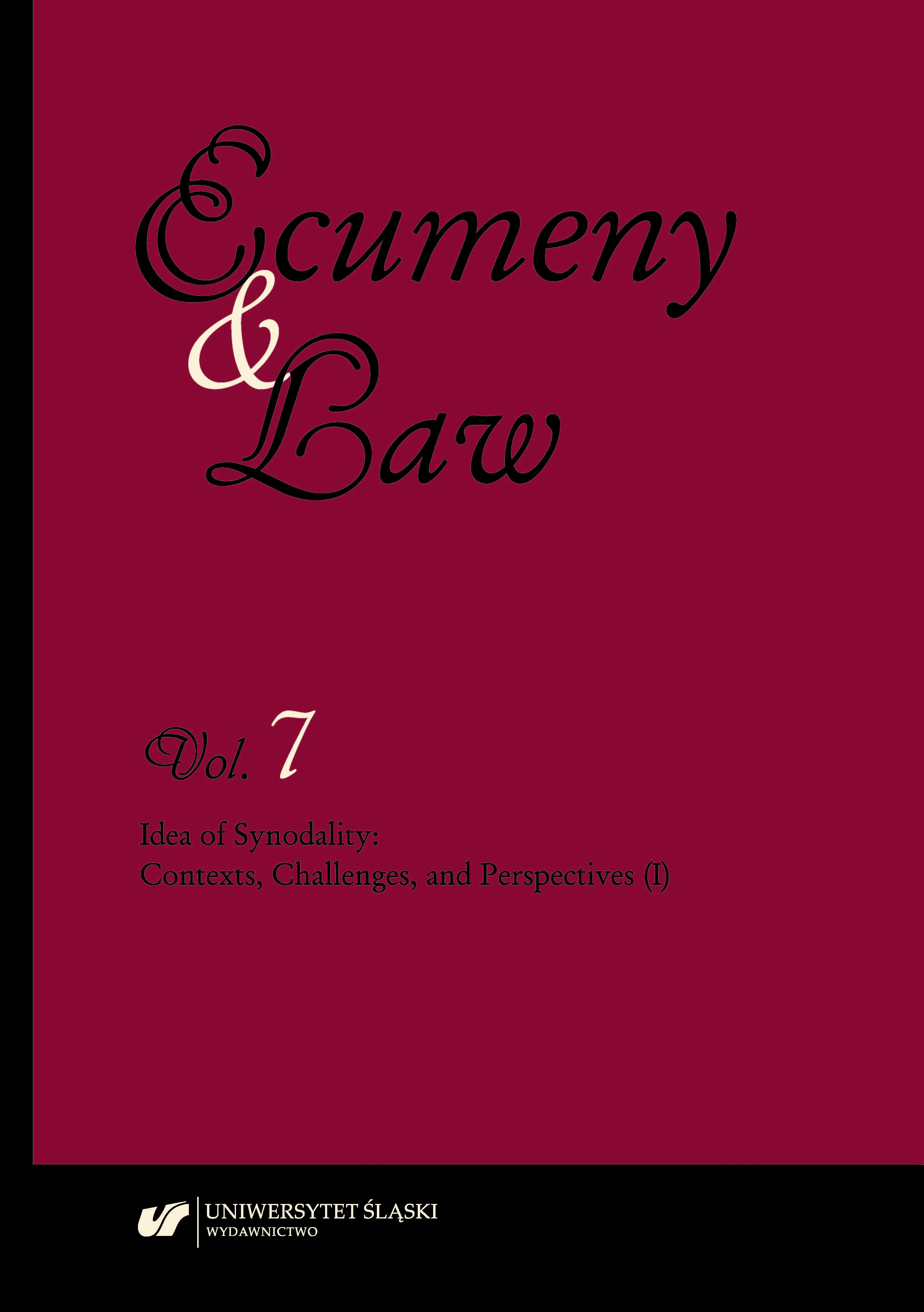Bibliography
Google Scholar
Abromeit H.-J.: “The Luther Effect: What was the aim of the Reformer and what was the result?” Gdański Rocznik Ewangelicki 11 (2017), pp. 107—114.
Google Scholar
Assel H.: “Evangelische Freiheit als Erbe — heute.” Gdański Rocznik Ewangelicki 6 (2012), pp. 149—162.
Google Scholar
Augsburg Confession. In: Book of Concord, http://bookofconcord.org/augsbur-gconfession.php (date of access: 20.03.2019).
Google Scholar
Apologia Confessionis Augustanae. In: Book of Concord, http://bookofconcord.org/defense_greeting. (date of access: 20.03.2019).
Google Scholar
Bäumlin R.: “Synode. ” In: Religion in Geschichte und Gegenwart. Tübingen 1962, Bd. 6, pp. 569—571.
Google Scholar
Carnis E. E., Christianity Through the Centuries. A history of the Christian Church. Michigan 1981.
Google Scholar
Prezydent Rzeczypospolitej Polskiej: Dekret z dnia 25 listopada 1936 r. o stosunku Państwa do Kościoła Ewangelicko-Augsburskiego w Rzeczypospolitej Polskiej. Dz.U. z 1936 r. Nr 88, poz. 613.
Google Scholar
Encyclopedia Britannica, https://www.britannica.com/topic/Protestantism (accessed: 29.11.2018).
Google Scholar
Ewangelickie Prawo Kościelne 1918—2018. Zbiór tekstów prawnych kościołów ewangelickich w Polsce. Eds. M. Hintz, M. Hucał. Warszawa 2018.
Google Scholar
Hintz M., Hucał M.: Wielowymiarowość ewangelickiego prawa kościelnego. Analiza porównawcza i teologiczno-prawna. Warszawa 2018.
Google Scholar
Hucał M.: “Idea państwa świeckiego w protestantyzmie od połowy XVII do XX wieku.” Studia z Prawa Wyznaniowego 19 (2016), pp. 175—193.
Google Scholar
Kłaczkow J.: Kościół Ewangelicko-Augsburski w Polsce w latach 1918—1939. Toruń 2017.
Google Scholar
Körtner U. H. J.: Ökumenische Kirchenkunde. Leipzig 2018.
Google Scholar
Leonhardt R.: Grundinformation Dogmatik: Ein Lehr- und Arbeitsbuch für das Studium der Theologie. Stuttgart 2009.
Google Scholar
Luther M.: An den christlichen Adel deutscher Nation von des christlichen Standes Besserung [To the Christian nobility of the German nation about the improvement of the Christian state] (1520), WA 6, pp. 404—469.
Google Scholar
Luther M.: De captivitate Babylonica ecclesiae praeludium (1520). WA 6, pp. 497—573.
Google Scholar
Luther M.: Von Konziliis und Kirchen (1539). WA 50, pp. 509—653.
Google Scholar
Pöhlmann H.G.: Abriß der Dogmatik. Ein Kompendium. Gütersloh 1990.
Google Scholar
Porvoo Statement, http://porvoocommunion.org/porvoo_communion/statement/the-statement-in-english/ (date of access: 12.11.2018).
Google Scholar
Prezydent Rzeczypospolitej Polskiej: Dekret z dnia 25 listopada 1936 r. o stosunku Państwa do Kościoła Ewangelicko-Augsburskiego w Rzeczypospolitej Polskiej. Dz.U. z 1936 r. Nr 88, poz. 613.
Google Scholar
Regulamin obrad Synodu Kościoła Ewangelicko-Augsburskiego w Rzeczypospolitej Polskiej z dnia 16 grudnia 1937 r. Dz. Urz. KEA z 1938 r. Nr 1 poz. 2. “Religia.” In: Encyklopedia PWN, Vol. 9, Warszawa 2003.
Google Scholar
Uglorz M.: Marcin Luter. Ojciec Reformacji. Bielsko-Biała 2006.
Google Scholar
Ustawa z dnia 13 maja 1994 r. o stosunku Państwa do Kościoła Ewangelicko-Augsburskiego w Rzeczypospolitej Polskiej. Dz.U. 1994, Nr 73, poz. 323.
Google Scholar
Wallmann J.: Kirchengeschichte Deutschlands seit der Reformation. Tübingen 2012.
Google Scholar
Zasadnicze Prawo Wewnętrzne Kościoła Ewangelicko-Augsburskiego w PRL z dnia 26 kwietnia 1964 r.
Google Scholar
Zasadnicze Prawo Wewnętrzne Kościoła Ewangelicko-Augsburskiego w Rzeczypospolitej Polskiej z dnia 31 maja 1991 r.
Google Scholar
Zasadnicze Prawo Wewnętrzne Kościoła Ewangelicko-Augsburskiego w Rzeczypospolitej Polskiej z dnia 26 października 1996 r. z późn. zm.
Google Scholar


 https://doi.org/10.31261/EaL.2019.07.04
https://doi.org/10.31261/EaL.2019.07.04

 10.31261/EaL
10.31261/EaL